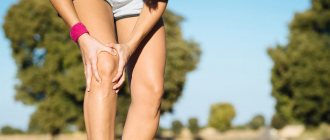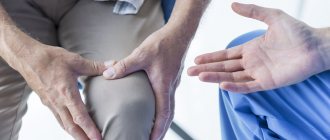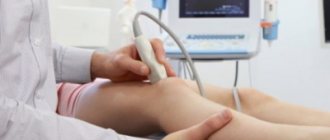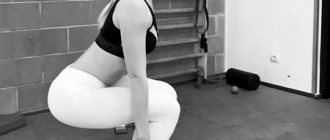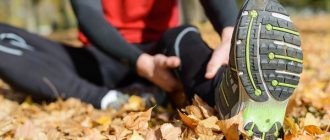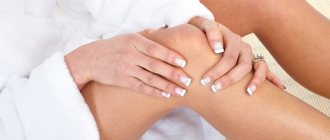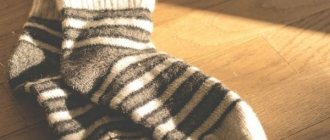Sergey Bubnovsky
My knees hurt. What to do?
Introduction to the topic
This material is presented not as in a textbook, but as a conversation or debate.
The fact is that there are many manuals, textbooks and monographs. But every doctor is content with his own library, which is recommended by his medical school. Therefore, it is sometimes difficult to find common ground if views on treatment and illness are different. Especially if the views are diametrically opposed. But I start primarily from the needs of patients who come to me as a doctor, and they are not very interested in the classification of joint diseases. They are usually interested in two problems - pain in the joint and a treatment method that will help get rid of this pain and return the joint to its normal state.
This book is based primarily on knee problems. But we will also touch on other, no less important topics. Let's talk about the complexity of the anatomical structure of the knee joint. This needs to be said, if only because doctors can look at or even read this book. At least so that there is no feeling of amateurism. As practice shows, treatment of the knee joint in conventional medicine is considered from only two perspectives:
1) treatment with non-steroidal anti-inflammatory drugs (NSAIDs) and chondroprotectors[1] interspersed with hormonal therapy and physiotherapy;
2) operations on joints, which have acquired a truly universal scale in recent years.
I offer my position in the treatment of the knee joint, which is fundamentally different from these two. There are also folk recipes that are widely promoted by the media, but I will not discuss them, since the analysis of most of these recipes has shown their primitiveness and inconsistency. Of all the forms of joint damage, I will consider two main ones - arthritis and arthrosis[2]. I will try to prove the validity of such a mini-classification by debating with the Association of General Practitioners (Family Doctors) of the Russian Federation and the Association of Rheumatologists of Russia[3].
Other problems raised in this book - sports injuries of the knee joint, rheumatoid polyarthritis and ankylosing spondylitis, I think will be no less interesting to the reader who, to one degree or another, has encountered any of them.
I think that the answer of the majority of specialists from these associations will be stones in my garden, I do not blame them for this, but the main argument in such a dispute is the result of treatment. Not a single person with joint problems entering a specialist’s office wants to become disabled after completing a course of treatment or receive everyday restrictions (corset, orthosis, cane, etc.) that sharply reduce the quality of his life.
Let's talk about this.
Instead of a Preface, or Unanswered Questions
A short man entered the office, swaying like a drake from side to side. Legs like wheels[4], dissatisfaction and irritation on the face. Of course... He was literally forcibly brought to the Center for Modern Kinesitherapy[5], where they forbid wearing knee pads, applying heat compresses to the joints, which helped him so much, albeit for a short time, and did not even recommend the use of chondroprotectors, on which he had already spent a lot of money.
“Here, you see, they treat you with exercises on some kind of simulators, and, which is completely out of the question, with ice packs that are applied to sore joints.”
He is 64 years old. He doesn't need to be taught how to treat himself. He knows everything about his joints better than any doctor.
This is what another patient thought when he crossed the threshold of my office. He was told that he had arthrosis of the knee joints and that, they say, this could no longer be treated with anything other than endoprosthetics, that is, replacing the original joint with an implant. Maybe he should come to terms with the disease and continue to be treated with the same methods and means to which he is already accustomed and which he no longer wants to replace with something else, albeit modern? Of course, because here are the most powerful drugs for pain relief, and laser, and other methods of physiotherapy, and even corticosteroids - everything, as doctors assure, is the most modern.
Of course, they help temporarily, not for long, but they help?! And although the use of some of these drugs has already developed a drug-induced disease, doctors call it iatrogenicity, he is ready to continue to fight knee pain with these drugs.
But then he came to the Bubnovsky Center, or whatever it is – the Kinesitherapy Center. “A friend was treated, recommended and even insisted. I'm tired of listening to him. So he came. Well. Let's listen to what they tell you about the treatment of joints. They told me to have surgery?! And here they are against surgery on my knees..."
return 1
Chondroprotectors are drugs that restore the cartilage tissue of the joint (allegedly - B.S.).
return 2
In special medicine, it has recently become common to call these two forms osteoarthritis and osteoarthritis.
return 3
Clinical recommendations. Osteoarthritis. Diagnosis and management of patients with osteoarthritis of the knee and hip joints / ed. O.M. Lesnyak. Moscow: GEOTAR-Media, 2006.
return 4
Wheel legs are a varus deformity of the limbs, characteristic of people with damage to the knee joints.
return 5
Modern kinesitherapy is a new direction in medicine: the basis for the treatment of large joints and the spine is the impact on the deep muscles of the musculoskeletal system with the help of special simulators to restore full joint mobility.
Read online “Knees hurt. What to do?"
Sergey Bubnovsky
My knees hurt. What to do?
Introduction to the topic
This material is presented not as in a textbook, but as a conversation or debate.
The fact is that there are many manuals, textbooks and monographs. But every doctor is content with his own library, which is recommended by his medical school. Therefore, it is sometimes difficult to find common ground if views on treatment and illness are different. Especially if the views are diametrically opposed. But I start primarily from the needs of patients who come to me as a doctor, and they are not very interested in the classification of joint diseases. They are usually interested in two problems - pain in the joint and a treatment method that will help get rid of this pain and return the joint to its normal state.
This book is based primarily on knee problems. But we will also touch on other, no less important topics. Let's talk about the complexity of the anatomical structure of the knee joint. This needs to be said, if only because doctors can look at or even read this book. At least so that there is no feeling of amateurism. As practice shows, treatment of the knee joint in conventional medicine is considered from only two perspectives:
2) operations on joints, which have acquired a truly universal scale in recent years.
Other problems raised in this book - sports injuries of the knee joint, rheumatoid polyarthritis and ankylosing spondylitis, I think will be no less interesting to the reader who, to one degree or another, has encountered any of them.
I think that the answer of the majority of specialists from these associations will be stones in my garden, I do not blame them for this, but the main argument in such a dispute is the result of treatment. Not a single person with joint problems entering a specialist’s office wants to become disabled after completing a treatment course or receive everyday restrictions (corset, orthosis, cane, etc.) that sharply reduce his quality of life.
Let's talk about this.
Instead of a Preface, or Unanswered Questions
“Here, you see, they treat you with exercises on some kind of simulators, and, which is completely out of the question, with ice packs that are applied to sore joints.”
He is 64 years old. He doesn't need to be taught how to treat himself. He knows everything about his joints better than any doctor.
This is what another patient thought when he crossed the threshold of my office. He was told that he had arthrosis of the knee joints and that, they say, this could no longer be treated with anything other than endoprosthetics, that is, replacing the original joint with an implant. Maybe he should come to terms with the disease and continue to be treated with the same methods and means to which he is already accustomed and which he no longer wants to replace with something else, albeit modern? Of course, because here are the most powerful drugs for pain relief, and laser, and other methods of physiotherapy, and even corticosteroids - everything, as doctors assure, is the most modern.
Of course, they help temporarily, not for long, but they help?! And although the use of some of these drugs has already developed a drug-induced disease, doctors call it iatrogenicity, he is ready to continue to fight knee pain with these drugs.
But then he came to the Bubnovsky Center, or whatever it is – the Kinesitherapy Center. “A friend was treated, recommended and even insisted. I'm tired of listening to him. So he came. Well. Let's listen to what they tell you about the treatment of joints. They told me to have surgery?! And here they are against surgery on my knees..."
I understood these doubts very well. There are two types of patients with painful joints. The former, as a rule, do not believe that it is possible to do without joint replacement surgery, even if the joint really needs this operation.
. They fight to the end, looking for a way out, sometimes turning to the most exotic means available to so-called traditional medicine.
I can immediately say that as for traditional medicine, there are no methods in it to cure even arthritis. There are ways to distract from pain and temporarily relieve tension in the body. But it is impossible to cure joints without knowledge of anatomy and physiology. And this is not the arrogance of the doctor. I have been studying since I was 13–14 years old and even now I am interested in all alternative methods of treating the musculoskeletal system, including traditional ones. Yes! Don't be surprised. I remember asking my parents to subscribe me to the magazine “Physical Education and Sports”, which had a section “7 pages of health”. I was 14 years old then - late 60s, I did not suffer from anything, I was a healthy, athletic guy. But the topic of alternative medicine, as they say now, attracted me. Why? I don’t know... A little later, the page “ZOZH” (“Healthy Lifestyle”) appeared in the newspaper “Soviet Sport”, which was then transformed into the now existing newspaper “ZOZH”. These sources of information made it possible to learn about people doing something unusual, but extremely attractive (to me, anyway) in the field of medicine. There was little such information in the USSR. This, one might say, childhood hobby of mine was very useful to me when I became a doctor. That's how it happens. You see patients in a clinic (student practice). You write out prescriptions for grandparents sitting in line. And no, no, some eccentric will come who, in response to your recipe, asks: “Do you know anything about urine therapy or fasting? Do you know such and such, such and such, who treat with this, that, and the third?” Of course, professors at medical schools never talked about such people in lectures, and I think any doctor who does not know such alternative information will brush off such questions, calling all these unconventional methods of treatment quackery, nonsense, etc. But I knew these “others and thirds” and therefore did not dismiss, but explained in detail the advantages or misconceptions of alternative treatment methods, since he actually studied many of them and even applied them on himself. Even now, having become a doctor, I continue to be interested in the history of alternative medicine. But nevertheless, for me there are adherents who develop medicine in a scientific direction, their treatment methods still retain their theoretical and practical relevance. First of all, this is Hippocrates, who defended the methods of natural medicine and proclaimed the principle: “Do no harm.” His oath is taken by all doctors upon graduation from medical school and forgotten in the very first days of their medical practice. Now symptomatic medicine dominates, which Hippocrates and his principles classify rather as alternative medicine, but I considered and consider myself one of the successors of his work and am not going to change my views on treatment, despite the rather aggressive medical environment. After all, we serve the sick, so let them choose their doctors. I believe that the principles of Hippocrates are one hundred percent consistent with the word “health”, that is, the protection of health, not disease. And it is impossible to maintain health or restore it without creating special conditions for this. The main ones are the sun, air and water, that is, the ecology of the earth, which, unfortunately, has transformed into a separate direction “Ecology”. Why "Unfortunately"? Yes, because the majority of doctors do not attach much importance to environmental conditions, focusing on chemistry, that is, on chemical medications. And so that the sun, air and water would not be an eyesore for them, they even created a separate direction - a sanatorium-resort. And in truly magnificent places from an environmental point of view, there are hospital buildings, served by the same puffy nurses and smoking doctors who make up the usual staff of any hospital. I have practically never seen a single sanatorium or dispensary that had specialists in health restoration. ...
Introduction to the topic
This material is presented not as in a textbook, but as a conversation or debate.
The fact is that there are many manuals, textbooks and monographs. But every doctor is content with his own library, which is recommended by his medical school. Therefore, it is sometimes difficult to find common ground if views on treatment and illness are different. Especially if the views are diametrically opposed. But I start primarily from the needs of patients who come to me as a doctor, and they are not very interested in the classification of joint diseases. They are usually interested in two problems - pain in the joint and a treatment method that will help get rid of this pain and return the joint to its normal state.
This book is based primarily on knee problems. But we will also touch on other, no less important topics. Let's talk about the complexity of the anatomical structure of the knee joint. This needs to be said, if only because doctors can look at or even read this book. At least so that there is no feeling of amateurism. As practice shows, treatment of the knee joint in conventional medicine is considered from only two perspectives:
1) treatment with non-steroidal anti-inflammatory drugs (NSAIDs) and chondroprotectors[1] interspersed with hormonal therapy and physiotherapy;
2) operations on joints, which have acquired a truly universal scale in recent years.
I offer my position in the treatment of the knee joint, which is fundamentally different from these two. There are also folk recipes that are widely promoted by the media, but I will not discuss them, since the analysis of most of these recipes has shown their primitiveness and inconsistency. Of all the forms of joint damage, I will consider two main ones - arthritis and arthrosis[2]. I will try to prove the validity of such a mini-classification by debating with the Association of General Practitioners (Family Doctors) of the Russian Federation and the Association of Rheumatologists of Russia[3].
Other problems raised in this book - sports injuries of the knee joint, rheumatoid polyarthritis and ankylosing spondylitis, I think will be no less interesting to the reader who, to one degree or another, has encountered any of them.
I think that the answer of the majority of specialists from these associations will be stones in my garden, I do not blame them for this, but the main argument in such a dispute is the result of treatment. Not a single person with joint problems entering a specialist’s office wants to become disabled after completing a course of treatment or receive everyday restrictions (corset, orthosis, cane, etc.) that sharply reduce the quality of his life.
Let's talk about this.

